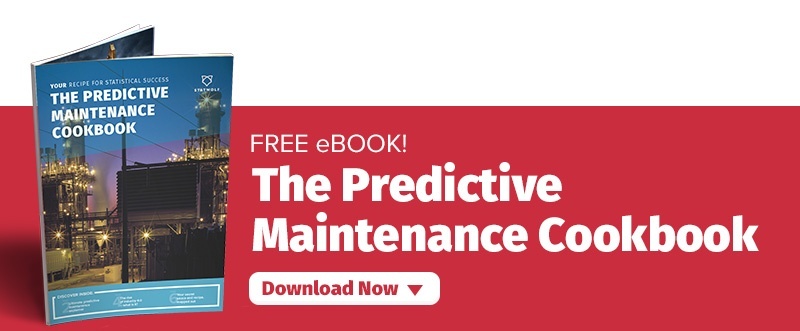How machine learning is changing the face of business
The game of Texas Hold’em poker features 10160 (the number 1 followed by 160 zeroes) ways to win. That’s significantly more options than there are atoms in the universe. It would be theoretically possible to programme a machine to know all of those options – but it would take a hell of a long time.
That’s why it was so ground-breaking when an artificially intelligent machine, called Libratus, developed by Carnegie Mellon University (CMU) in the US, beat four world-class Texas Hold’em poker players. According to Wired, Libratus mainly, “relied on a form of AI known as reinforcement learning, a method of extreme trial-and-error. In essence, it played game after game against itself.”
IBM’s Watson, another artificially intelligent machine, also beat the world’s best Jeopardy players.
The reason Libratus’ win is more significant than Watson beating the Jeopardy experts is because poker players are, by definition, masters of the dark arts. They bluff, lie and engage in mind games to win.
Algorithms that play better than us
Jason Les is one of the professional poker players beaten by the CMU machine and he was stunned by the quality of his opponent’s play. “I’m just impressed with the quality of poker Libratus plays,” he said, after losing $880,087 worth of chips.
“They made algorithms that play this game better than us. We make a living trying to find vulnerabilities in strategies. That’s what we do every day when we play heads-up no-limit. We tried everything we could, and it was just too strong.”
It’s advances like this that will see valuations on the artificial intelligence market reach close to $50 billion by 2020. A 2016 survey undertaken by Narrative Science showed that 38 percent of organisations already employ artificial intelligence, and that by 2018, it will rocket to more than 60 percent.
Case study: Moo.com
Moo.com is a provider of on-demand printing services and it is currently exploring the world of machine learning and artificial intelligence – especially when it comes to its marketing. Moo.com aimed to improve customer service with an AI-led project to replace the static Frequently Asked Questions section on their website.
The Moo.com system examines past visitor behaviour to learn what is most popular and promotes relevant material to new visitors. Moo.com is also using AI to tag and categorise feedback from customers instead of doing the process manually, which was a significant drain on employees’ time.
Since implementing both projects in late 2015, Moo.com has seen a 20 percent reduction in chat volume as customers have become better able to help themselves.
The way forward
It’s not just in customer service that machine learning is making a difference. In Formula One, McLaren uses machine learning to analyse fuel consumption, tyre wear and even driver fatigue during races.
According to Fortune, “the McLaren team builds its race cars for each track based on historical data and simulations generated by the current season’s sensor data. It builds prototype parts with 3D printers and tests them in wind tunnels. Approved designs are constructed in carbon fibre. The process ensures that every aspect of the car’s design is based on data.
McLaren’s quest for perfection is fuelled by more than 150 sensors which monitor the performance of both the car and the driver. Statistics on brake wear, tire life and even driver biometrics are measured. During just one lap of a typical race, 2GB is transmitted by these sensors and in once race – a whopping 3TB of data is generated.
McLaren is so good at data techniques that it is hiring out their data system to ConocoPhillips – one of the largest companies in the world – to use on its oil rigs. And they’ve even branched out to healthcare.
The monitoring sensors McLaren developed to check the driver’s physical state are now being used in Birmingham’s Children’s Hospital in the UK to monitor patients around the clock for vital body changes. These sensors are always on and represent a significant upgrade on the old system whereby hospital staff had to manually record vital signs every four hours.
TGI Fridays launched a chatbot based on machine learning and artificial intelligence to personalise its interactions with customers. With the chatbot, customers (or potential customers) can get happy hour suggestions, use emojis and even order delivery through the bot.
Sherif Mityas, acting CIO of TGI Fridays, said that the initiative delivered results because, “we wanted to be part of the conversation when someone was thinking about where to go for happy hour or get recommendations on the most popular drink. That’s where the initial power of chatbot technology comes into play.”
The restaurant chain has seen a 500 percent increase in engagement with customers on social media channels since deploying its new conversation-based customer experience tools. By all accounts, that’s a huge win for the brand.
Want to see how machine learning can help your business?
Here at Statwolf, we create bespoke systems that integrate our highly intelligent artificial intelligence solutions into your business. If you’re responsible for extremely complex problem solving with a need for strict monitoring and issue prevention, Statwolf’s data science service can help, with advanced online data visualisation and analysis simply running in your web browser.
With a rich library of machine learning algorithms, Statwolf can unlock hidden patterns and help generate accurate forecasts you can feed directly into your processes. Check out what our machine learning algorithms and data science services can do for you.
Want to make sense of your data? Download our comprehensive guide: The Predictive Maintenance Cookbook.



